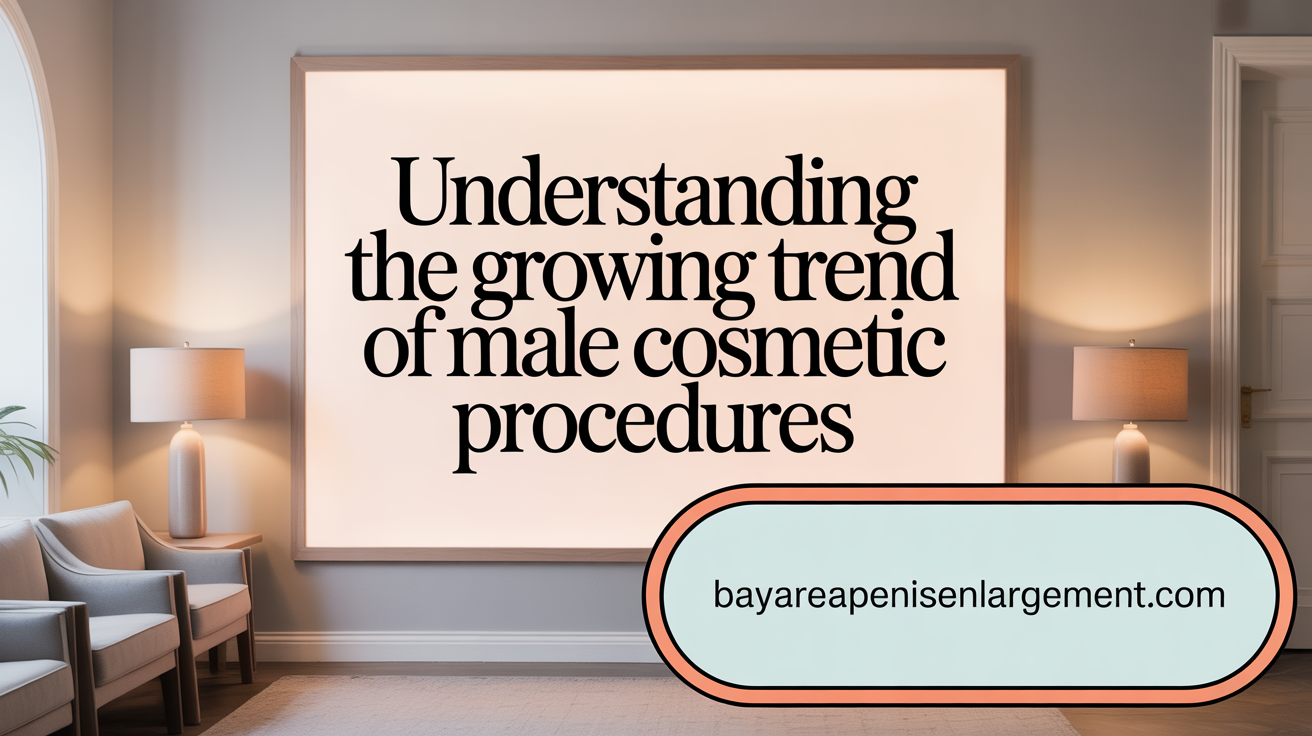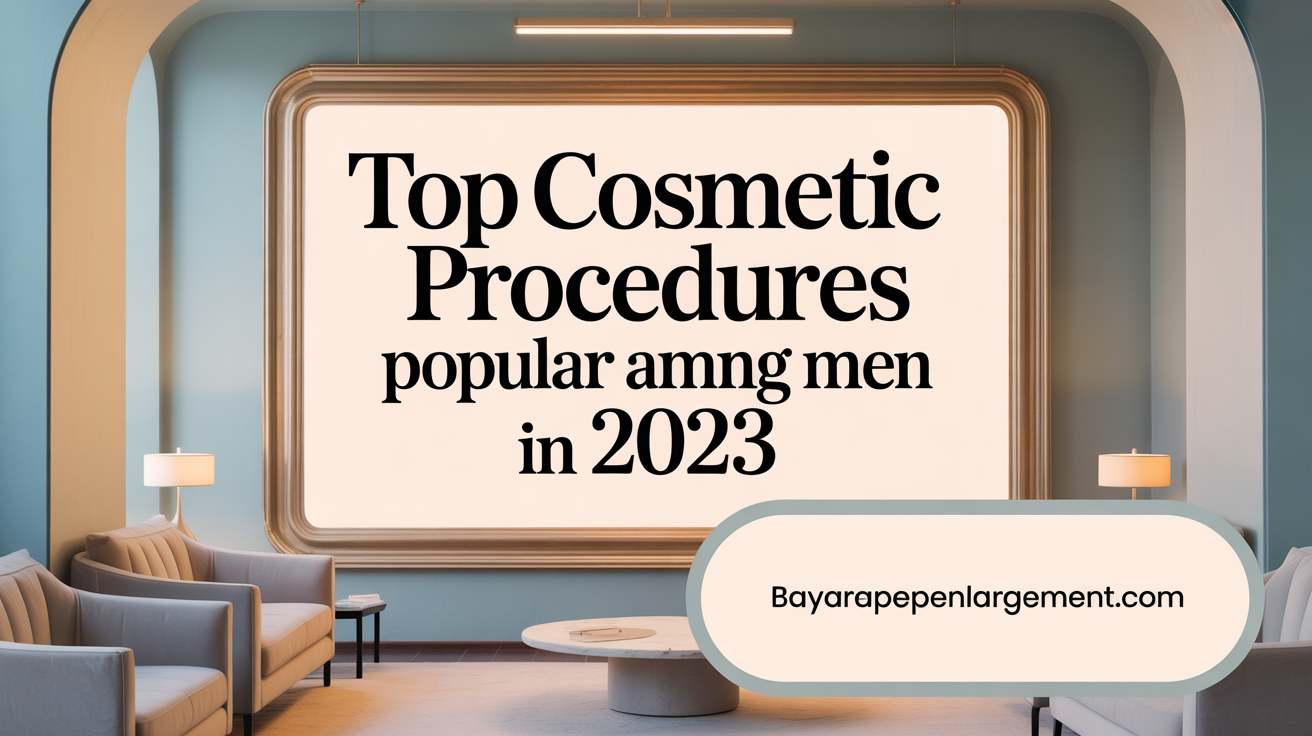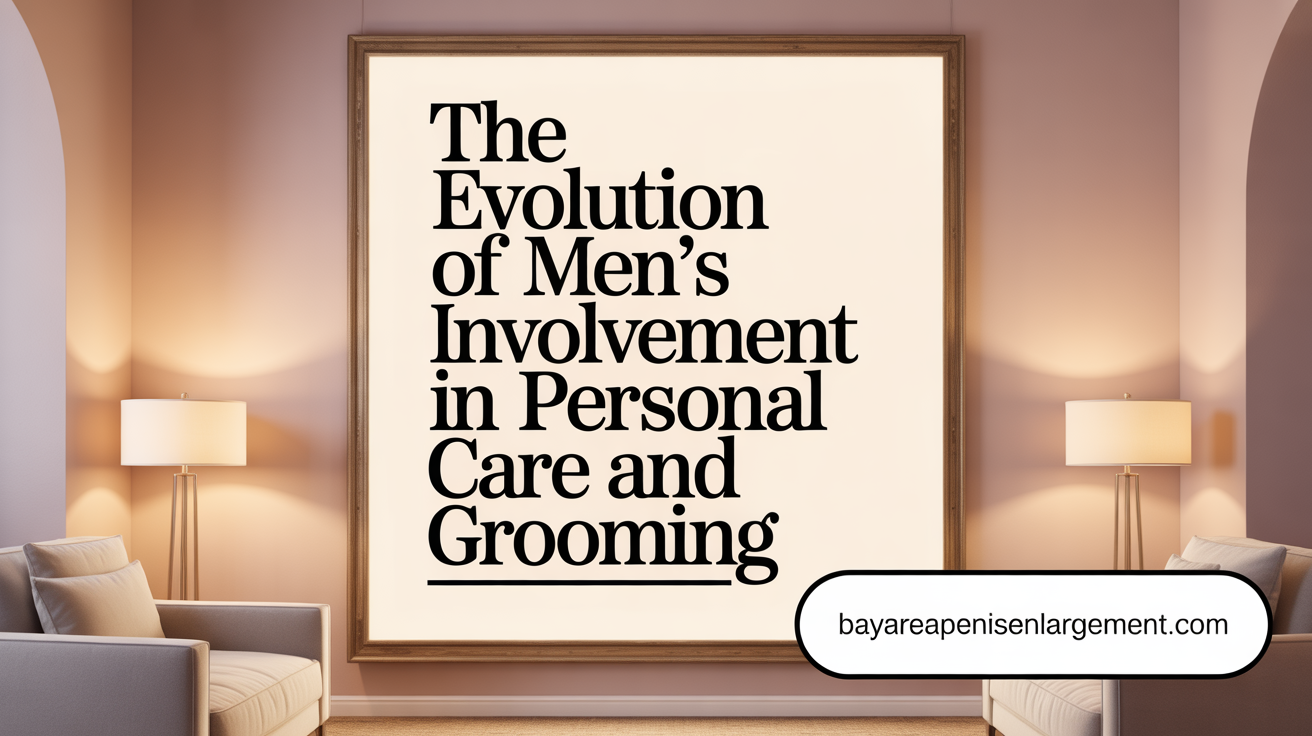Understanding the Male Presence in Cosmetic Procedures
Cosmetic surgery has traditionally been seen as a female-dominated field, but recent years have witnessed a notable rise in the number and variety of cosmetic procedures sought by men. This article explores the share of cosmetic procedures performed on male patients today by examining global trends, popular surgeries, demographics, and underlying motivations. We will delve into how male participation has evolved, which procedures are most common among men, and what future shifts may be on the horizon in the aesthetic industry.
Current Landscape: Male Participation in Cosmetic Surgery and Procedures

What Share of Cosmetic Procedures Are Performed on Male Patients Today?
Male patients represent a steadily growing segment of the global aesthetic industry. Currently, men account for about 10% to 13% of all cosmetic procedures worldwide. In specific datasets, such as those reported in the United States, male procedures make up roughly 6.5% of total cosmetic treatments.
Despite their minority status compared to women—who constitute over 85% of all patients—the number of procedures performed on men is increasing. For example, in 2018, over 1.3 million men in the US underwent cosmetic procedures, marking nearly a 30% rise since 2000.
Globally, the annual number of aesthetic surgeries and treatments totals around 35 million, with men contributing significantly to this figure. Leading countries like the United States and Brazil perform the highest number of male procedures, with millions of treatments carried out annually.
Year-to-year fluctuations occur, but the overall trend clearly shows an expanding interest among men in both surgical and non-surgical aesthetic options. Popular procedures among male patients include rhinoplasty, eyelid surgeries, liposuction, and non-invasive treatments like Botox and fillers.
This increasing involvement reflects greater acceptance of aesthetic enhancement among men, driven by societal shifts, a desire for youthful appearance, and the need to stay competitive in personal and professional spheres.
Most Common Cosmetic Procedures Among Men

What are the most common cosmetic procedures performed on male patients?
Male patients are increasingly seeking a variety of cosmetic procedures to enhance their appearance and maintain a youthful look. The most popular surgical options include rhinoplasty (nose reshaping), blepharoplasty (eyelid surgery), liposuction, and gynecomastia surgery (male breast reduction). Among these, rhinoplasty remains the leading male-focused surgical procedure, with tens of thousands performed annually. It is often done not only to alter nose size and shape for a more masculine appearance but also to correct functional issues like a deviated septum.
Liposuction is another widely performed procedure, helping men contour areas such as the abdomen, chin, and flanks—especially as they seek a leaner body shape. Hair transplants have become common due to the high prevalence of male pattern baldness, with technological advancements making results more natural. Gynecomastia surgery addresses enlarged male breasts, which affect about one in four men over age 50.
In addition to surgeries, non-invasive treatments are gaining popularity among men. Botox, often called 'Brotox,' is used to relax facial wrinkles and create a more youthful, masculine look. Dermal fillers help restore facial volume and definition, with many men opting for these subtle enhancements without the downtime associated with surgery.
Popular surgeries for men
| Procedure | Estimated Number per Year | Purpose and Notes |
|---|---|---|
| Rhinoplasty | Tens of thousands | To achieve a masculine, straighter nose and improve breathing |
| Blepharoplasty | Increasing in demand | To reduce eyelid aging signs and refresh facial appearance |
| Liposuction | Over 2 million globally | To remove stubborn fat from the abdomen, chin, or flanks |
| Gynecomastia surgery | Nearly 100,000 cases | To treat enlarged male breasts, improving chest contour |
| Hair transplantation | Rising, especially in men | To combat hair loss, improving overall grooming appearance |
Non-surgical treatments favored by men
| Treatment | Procedures in 2022 | Increase since 2019 | Purpose |
|---|---|---|---|
| Botox ('Brotox') | Over 1.5 million | 65% | Wrinkle reduction, especially on forehead and around eyes |
| Dermal Fillers | Large growth | 70% | Facial volume restoration, chin, and cheek augmentation |
| Sclerotherapy | 54% increase | Since 2019 | To treat spider veins and varicose veins |
Unique male cosmetic procedures
Men often require larger doses of treatments like Botox and prefer specialized clinics tailored to their needs, such as The Club House in NYC. Procedures like chin implants, jawline contouring, and ear surgeries are also trending as men aim for a more defined and masculine facial structure. Overall, the trend shows an increased willingness among men to undergo both surgical and non-surgical procedures to enhance self-esteem and stay competitive.
This growing acceptance of aesthetic procedures among men is reflected in data showing that while women still account for the majority of procedures, the number of men seeking treatments has risen significantly. In 2023, over 1.7 million procedures involved male patients, with a notable upward trend in the popularity of anti-aging and body contouring techniques.
Demographics and Motivations Driving Male Cosmetic Procedures

What demographic groups undergo the most cosmetic procedures?
Male patients who seek cosmetic enhancements are predominantly between the ages of 35 and 50. This group is often motivated by professional demands, rising visible aging, and self-image concerns. Data indicates that in recent years, younger men in the 18–34 age bracket also pursue procedures like rhinoplasty and facial fillers, particularly as technological improvements make such options more accessible.
Compared to women, who continue to make up around 85% of all aesthetic procedures and predominantly include middle-aged and older age groups, men form a smaller but expanding segment. Specifically, men account for about 13% of all cosmetic surgeries, with a noticeable rise in minimally invasive treatments such as Botox, fillers, and laser hair removal.
Why are these trends on the rise?
The increase in male cosmetic procedures is driven by evolving societal attitudes towards masculinity and self-care. Men now see cosmetic treatments as a way to maintain a youthful appearance, boost confidence, and stay competitive professionally.
This shift is also influenced by cultural perceptions of masculinity changing over time. Many men are now open to procedures like blepharoplasty, rhinoplasty, and liposuction, viewing them as part of routine self-care rather than vanity.
How societal attitudes are shifting
Modern society is becoming more accepting of male cosmetic enhancements. The normalization of procedures such as Botox, often called 'Brotox,' has contributed significantly to this trend.
Additionally, technological advances in minimally invasive treatments have made procedures safer, more affordable, and with less downtime—traits especially appealing to aging professionals.
As a result, cosmetic surgery is increasingly seen as a form of self-maintenance for men, paralleling their counterparts' views on health and fitness. These attitudes are supported by more tailored clinics and marketing campaigns targeted specifically at men, emphasizing masculinity, confidence, and appearance.
| Age Group | Percentage of Procedures | Popular Procedures | Motivations |
|---|---|---|---|
| 18-34 | Increasing; e.g., rhinoplasty, fillers | Rhinoplasty, chin augmentation | Youthful appearance, social influence |
| 35-50 | Largest group; e.g., blepharoplasty, liposuction | Liposuction, eyelid surgery | Aging signs, professional confidence |
| 50+ | Growing interest, mainly anti-aging | Facelifts, neck lifts | Aging, self-esteem |
This demographic segmentation highlights how motivations and procedures vary across age groups, reflecting both physical aging and social factors.
Trends and Growth: How Male Participation Has Evolved Over Time

How have trends and participation rates changed for males undergoing cosmetic procedures?
Male involvement in aesthetic procedures has experienced remarkable growth over the past decades. From 1997 to 2015, there was a threefold increase in the number of men receiving cosmetic surgeries, rising from a fraction to over 1.2 million procedures annually. This upward trend continued, with over 1.3 million men undergoing treatments in 2018, representing around 13% of all cosmetic procedures at that time.
The types of procedures sought by men have diversified significantly. Traditionally popular options like rhinoplasty and eyelid surgery remain among the top choices. However, minimally invasive treatments such as Botox, dermal fillers, and laser hair removal have gained immense popularity. Since 2000, there has been a 72% increase in minimally invasive procedures, reflecting a shift in preference for less recovery time and lower risk.
Surveys reveal that societal attitudes are shifting, with nearly one-third of men expressing interest in cosmetic procedures. The growth is also driven by advancements in technology that enable surgeons to deliver more masculine, natural-looking results. As societal acceptance of male aesthetic enhancement continues to grow, so does the participation rate, making male cosmetic procedures an increasingly prominent part of the industry.
Comparing Male and Female Cosmetic Procedure Patterns
How do cosmetic procedure rates differ between males and females?
Women continue to be the predominant recipients of cosmetic procedures, accounting for approximately 85-92% of all procedures globally. In contrast, men represent only about 8-13%. Despite this disparity, there's a clear upward trend in male participation, with an increase in procedures aimed at improving masculinity and facial features. For example, recent data shows that in 2024, male procedures account for around 6.5% of all cosmetic surgeries, reflecting a gradual but steady rise.
Cultural and social factors largely influence these differences. Societal expectations often favor aesthetic enhancements among women, leading to a larger gap. Nevertheless, interest among men remains high; surveys indicate that about one-third of men are 'extremely likely' to consider cosmetic surgery. Yet, fewer men follow through with surgery compared to women, often choosing less invasive, natural-looking procedures to maintain their masculine identity.
Differences in procedure types and goals
Men typically seek cosmetic procedures that emphasize a strong, masculine appearance. The most common surgical choice among men is rhinoplasty, typically aimed at creating a straighter, more traditionally masculine nose. Eyelid surgery (blepharoplasty) is also popular to rejuvenate the eye area and reduce signs of aging.
Body sculpting procedures like liposuction are favored, especially for removing stubborn fat deposits. Male breast reduction for gynecomastia is another frequent procedure, with about 30% of rhinoplasties performed on men to achieve a more masculine profile.
In terms of non-surgical options, botulinum toxin ('Brotox') and dermal fillers are highly favored. These treatments are preferred for wrinkle reduction and facial rejuvenation, providing subtle improvements that align with men's desire for natural results.
Interest versus actual procedure rates among men
While the actual number of procedures performed on men increases gradually, interest levels are significantly higher. Surveys show that around 31% of men express strong interest in undergoing some form of cosmetic surgery.
However, actual procedural rates still lag behind women's, partly due to social norms and personal comfort levels. Nevertheless, minimally invasive treatments like Botox, fillers, and laser treatments have seen rapid growth among men, with increases of over 60-70% since 2019.
This discrepancy indicates a growing acceptance and pursuit of aesthetic enhancement among men, suggesting that the gap is narrowing. As societal attitudes continue to evolve, and specialized clinics catering to male aesthetic needs become more common, male cosmetic procedure rates are expected to grow further.
Unique Male Cosmetic Procedures and Emerging Trends
What types of cosmetic procedures are specifically popular or unique to male patients?
Men are increasingly selecting procedures that cater to their masculine features and aesthetic preferences. Unlike procedures traditionally popular among women, male patients often seek body contouring surgeries like liposuction to target areas such as the chin, abdomen, and flanks for a leaner look.
A significant portion of men also opt for gynecomastia surgery, also known as male breast reduction, which addresses enlarged breast tissue and is a common concern among men of varying ages.
Hair transplants have become essential for men facing male-pattern baldness, with over two-thirds of men experiencing hair loss by age 50. These procedures help restore a more youthful and vigorous appearance.
Facial cosmetic surgeries like rhinoplasty, eyelid surgery (blepharoplasty), and chin implants are popular to enhance masculinity or reverse aging signs. Rhinoplasty, in particular, is the most common surgery among men, often performed to straighten or size the nose, aligning with masculine facial features.
Non-surgical options like Botox — often called 'Brotox' — and dermal fillers are also fast-growing among men. These treatments contribute to wrinkle reduction and facial rejuvenation, typically requiring higher doses due to stronger facial muscles.
With evolving industry standards, clinics are increasingly tailoring their offerings to men. This includes gender-specific treatment protocols, comfortable environments, and marketing strategies that highlight masculinity and health, encouraging more men to consider cosmetic procedures confidently.
The Future of Male Cosmetic Procedures: Trends and Opportunities
The share of cosmetic procedures performed on male patients continues to grow, reflecting shifting social norms and expanding procedure options crafted specifically for men. Although women remain the majority of participants, male demand for both surgical and non-surgical treatments is steadily increasing worldwide. With advancements in technology and greater cultural acceptance, the cosmetic surgery field is adapting to meet the unique aesthetic and health needs of male patients. Looking forward, this trend suggests continued diversification of procedures and broader participation as men embrace aesthetic enhancements as part of personal well-being and confidence.
References
- 2024 Annual Trends Survey
- Global Survey 2023: Full Report and Press Releases - ISAPS
- Male Plastic Surgery San Antonio | Dr. Jose Barrera, MD
- American Society of Plastic Surgeons Breaks Down 2022 Plastic ...
- The Top 7 Cosmetic Procedures For Men - Aedit.com
- Men, Masculinity, and Plastic Surgery: Is There a Connection?
- Cosmetic Surgery Trends 2024: Facial Rejuvenation Surges While ...
- Do Men Get Plastic Surgery? | Dr. Raj Mohan
- Stats and Trends Among Male Plastic Surgery Patients

